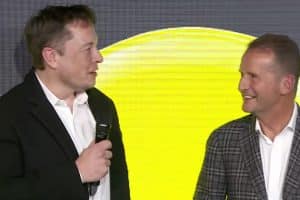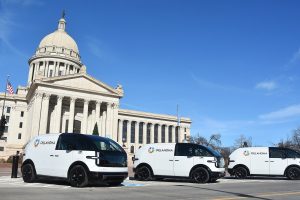- 🚫 Tesla warns against Supercharger “life hack” involving a wet cloth.
- ☀️ Wet cloth on Supercharger handles is used to combat high temperatures.
- ⛔ Wet cloth trick interferes with Supercharger’s temperature monitors, risking overheating.
- ❌ Official statement: wet cloth does not improve charging speeds.
- 🙄 Mixed reactions from Tesla owners regarding the caution; some criticize Tesla’s cooling systems.
In the world of electric vehicles, Tesla owners are often seen as pioneers of innovation, eager to hack their way to optimized performance. Recently, a popular “life hack” involving the use of a wet cloth on Supercharger handles has drawn caution from Tesla itself. This blog post delves into what this trick entails, the risks highlighted by Tesla, and the varied reactions from the Tesla community.
Tesla vehicles have revolutionized the electric vehicle (EV) market, offering cutting-edge technology that enhances user experience and sustainability. As Tesla ownership grows, so does the community’s shared knowledge about optimizing vehicle performance. One recent “life hack” claims to improve Supercharging rates by placing a wet cloth on the Supercharger handle. However, Tesla has officially cautioned against this practice, citing potential risks.
The Wet Cloth “Life Hack”
What is the Wet Cloth Trick?
When Tesla owners charge their vehicles in hot weather, the Supercharger handles can become extremely hot. This temperature rise prompts the sensor inside the Supercharger handle to moderate the charging speed to maintain a safe temperature. To counteract this, some Tesla owners have started placing a wet cloth over the handle to cool it down.
How Does It Work?
- Heat Reduction: The idea is that the wet cloth cools down the Supercharger handle.
- Sensor Manipulation: By reducing the temperature, the sensor may be “tricked” into allowing faster charging rates.
- Community Observations: Various reports from forums and social media platforms suggest that users do experience higher charging speeds when employing this technique.
Tesla’s Official Warning
Why Tesla Disapproves
Tesla has expressed significant concern about the wet cloth trick through its official Tesla Charging account. Key points include:
- Interference with Temperature Monitors: The wet cloth can interfere with the temperature monitoring systems within the Supercharger handle.
- Risk of Overheating: This interference could lead to overheating of the charging equipment.
- Potential Damage: There is a risk of damaging the Supercharger infrastructure, which could have long-term implications for both the user and Tesla’s network.
Official Statement
“Placing a wet cloth on Supercharger cable handles does not increase charging rates and interferes with temperature monitors, creating a risk of overheating or damage. Please refrain from doing this so our systems can run correctly, and true charging issues can be detected by our systems,” Tesla Charging account wrote on X.
Community Reactions
Support and Criticism
The response from the Tesla community has been mixed.
- Supporting Tesla’s Caution:
- Some Tesla owners have welcomed the cautionary advice, appreciating the emphasis on safety and long-term vehicle health.
- Others understand the potential risks and agree with keeping the Supercharging infrastructure functioning correctly.
- Criticizing Tesla’s Response:
- Skepticism: Some users are skeptical and believe the warning is an excuse to mask inefficiencies in Tesla’s cooling system.
- Demand for Improvement: Others argue that Tesla should invest in better cooling mechanisms for Superchargers to eliminate the need for such hacks.
Real vs. Perceived Benefits
While some Tesla owners claim they’ve seen improved charging speeds with the wet cloth trick, Tesla’s official stance is that it provides no real benefit. This discrepancy has fueled further debate within the community.
Expert Opinions and Advice
The Importance of Proper EV Maintenance
- Avoid Unapproved Hacks: Experts advise against using unapproved methods to manipulate EV systems, as these can have unintended consequences.
- Follow Manufacturer Guidelines: Always adhere to guidelines provided by the manufacturer to ensure the longevity and safety of your vehicle and its components.
Alternatives to Consider
For those experiencing throttled Supercharging speeds due to high temperatures, consider these alternatives:
- Shade or Covered Charging Areas: Look for shaded areas or covered Supercharger stations to minimize direct sun exposure.
- Pre-Cool the Vehicle: Use your Tesla’s pre-cooling features to bring down the internal temperature before charging.
- Adjust Charging Times: Charge during cooler parts of the day, such as early morning or late evening.
Conclusion
While the wet cloth trick might seem like a clever quick fix, it comes with significant risks according to Tesla. The mixed reactions from the Tesla community underscore the ongoing debate about charging efficiency and safety. As the EV ecosystem continues to evolve, the emphasis must remain on safe, sustainable practices that adhere to manufacturer guidelines.
For now, it’s best to heed Tesla’s caution and explore safer alternatives to optimize your charging experience.





